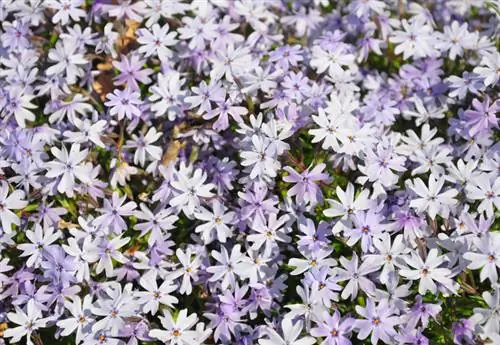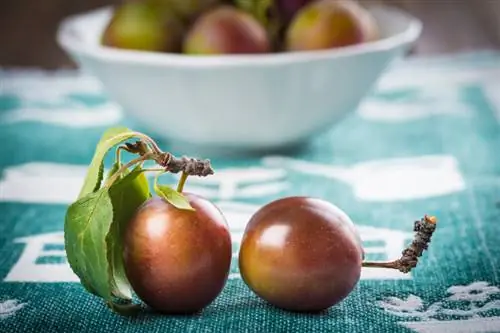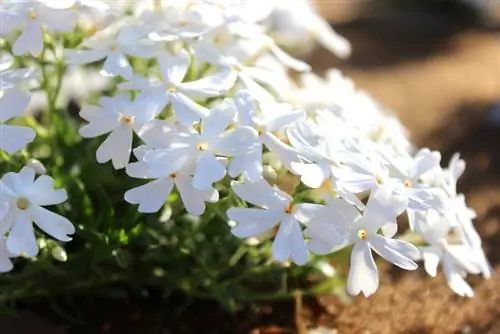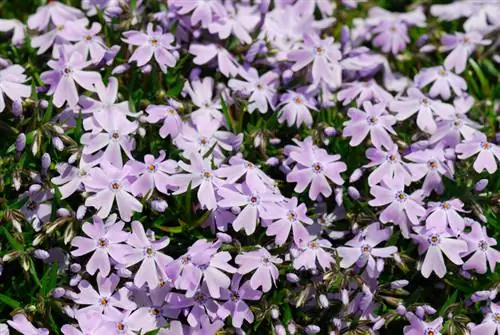- Author admin [email protected].
- Public 2023-12-16 16:46.
- Last modified 2025-01-23 11:20.
The cushion phlox is one of the few plants in the garden that can grow relatively decoratively and persistently even without regular pruning. However, you should not shy away from the care and effort of pruning for this type of plant, as these reward the hobby gardener with a number of advantages.

How and when should you cut upholstery phlox?
Cutting upholstery phlox is easy: after flowering, cut the plant back by about a third to encourage re-blooming. Apply radical pruning to within a hand's width every two to three years to prevent the middle from becoming bald. You should also ideally cut cuttings between May and July.
Stimulate re-blooming by pruning
The cushion phlox is a plant that doesn't really require much care all year round in a well-chosen location. If you would like to extend the flowering period of this decorative ground cover a little, then you can try your luck as follows: Simply cut the plants back by about a third immediately after flowering. Depending on the location, weather and the condition of the plants, further flowering may occur in the same year.
Rejuvenate the upholstery phlox by radical pruning
As already indicated, the upholstery phlox can survive for several years without pruning. However, similar to other rock garden plants, the plant cushions can become bald from the center. To prevent such unaesthetic developments, you can radically prune the plants every two to three years. As part of this pruning, you should shorten the upholstery phlox to about a third or the height of a hand's width. You can then encourage the formation of new side shoots using sparingly dosed liquid fertilizer (€9.00 on Amazon).
Cut cuttings from upholstery phlox at the right time
The propagation of cushion phlox (Phlox subulata) is possible in three different ways:
- by sowing the seeds
- by dividing older specimens in spring
- about cuttings
When propagating using the cutting method, it is important to pay attention to the right time to ensure good success. It is ideal if you cut head cuttings with a length of around 5 to 6 cm between May and July. For strong offshoots, stick these in bunches into a loose growing substrate and keep it evenly moist for the first few weeks. Since the cuttings usually root relatively quickly, you can transplant them to their final location before autumn.
Tip
For various reasons, it can occasionally happen that individual shoots of upholstery phlox die and become dry. You can remove these at any time, regardless of the season, to restore the decorative character of the plants.






